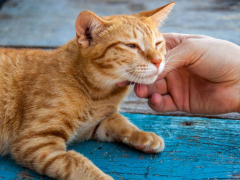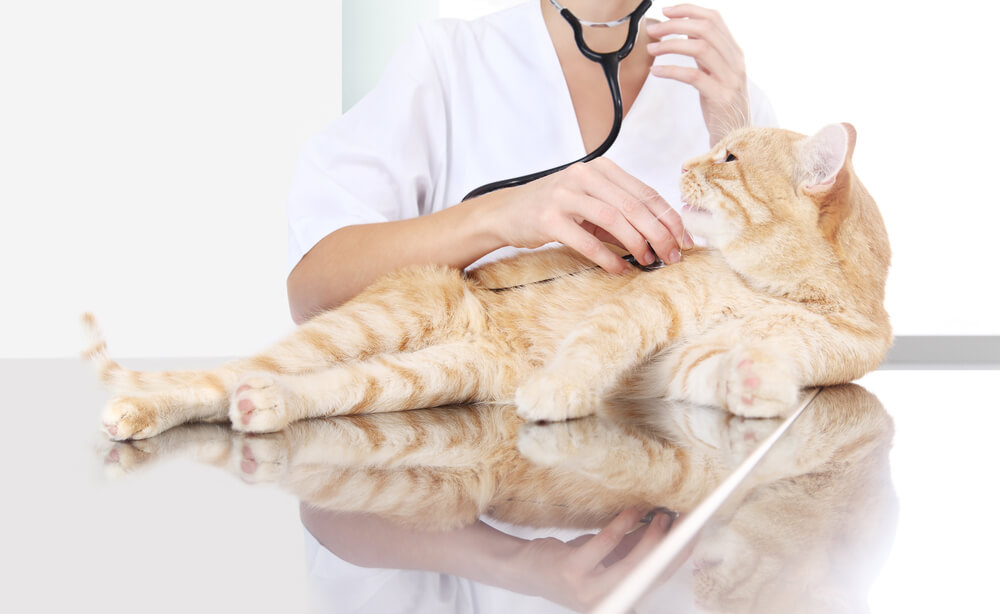
A broken pelvis in cats is a very serious injury causing pain and difficulty with movement of the hindlimbs. Collectively, pelvic fractures comprise about 25% of fractures seen in pets.
Because they usually occur in combination with other serious injuries, quickly seeking veterinary care is extremely important. In this article, you’ll learn causes of pelvis fractures in cats, what a cat with a pelvic fracture may look like, how these injuries are approached and treated, estimate costs, and some frequently asked questions.
Understanding the Pelvis
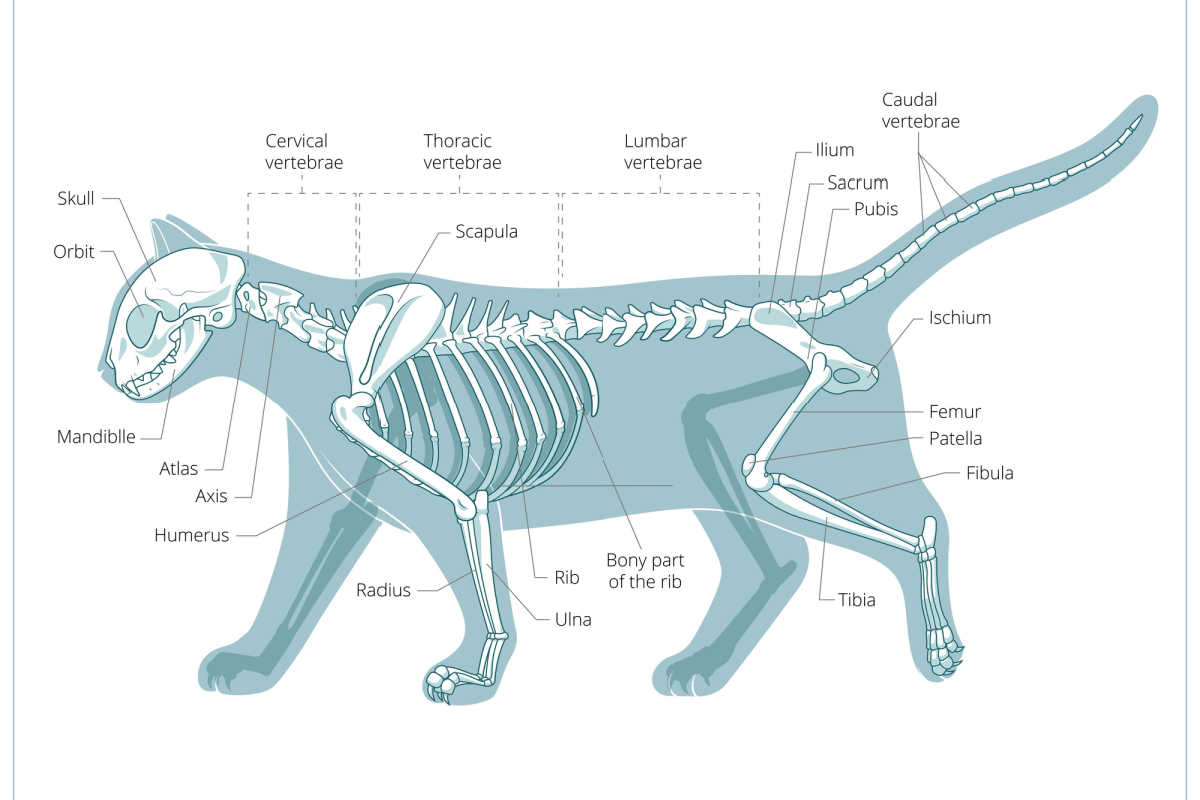
Three bones connect together to form a cat’s pelvis. They are the ilium, the ischium, and the pubis.
The pelvis is not one single bone, but a combination of three main separate bones that is each divided into two fused pieces. These three bones are called the ilium, the ischium, and the pubis. Each bone has two halves that are fused at the center. The ilium is also fused to the sacrum, which is the very end of the back bone before the beginning of the tail bones.
The ilium is the largest of the three and the forward most bone. If you feel your cat’s hips, the forward most hip bone you can feel is the tip of the ilium. The ischium is the bone furthest back and is the back “point” of the hips that you can feel near the base of the tail.
The pubis is the bottom most bone. The junction of these bones on each side of the hips form the acetabulum, or the “socket” part of the ball and socket joint of the hips. A small fourth bone called the acetabular bone completes the socket.
Together, the three main pelvic bones form a box type structure. The functions of the pelvis include:
- Protection of structures that pass through it including the colon and the urethra
- The center of weight-bearing support for the back part of the body
- Connection of the hind limbs to the rest of the body through the “ball and socket” joint at the acetabulum.
Causes of Pelvic Fractures in Cats
The most common cause of pelvic fractures is almost always an impact trauma. The most common is vehicular trauma (hit by car). Un-neutered male cats that are inclined to roam far from their homes are at the highest risk. This injury can also result from a fall from a very high height, such as a tree or balcony, which is often referred to as “high-rise syndrome.”
Other less common causes of pelvic fractures in cats include nutritional disorders and cancer. Usually other bones, like long bones are more affected, but it can occur in the pelvis, too.
If a cat is fed a diet very high in phosphorus, the body must mobilize calcium to balance it out, as calcium and phosphorus must be present in a certain balance. If calcium is lacking in the diet compared to phosphorus levels, calcium will be pulled out of bone, which can weaken bones.
Weakened bones can become brittle and break more easily. This disorder can be seen in kittens that are not fed the correct mineral balance for bone growth. It can also occur in older cats fed all meat diets that are naturally high in phosphorus where proper calcium supplementation and mineral balance is not provided.
The most common type of bone cancer seen in pets is called osteosarcoma. It most often occurs in the femur and tibia bones of the hind limbs, but can occur less commonly in the pelvic bones.
Symptoms of a Broken Pelvis in Cats
The signs of a broken pelvis seen in a cat will depend on the nature and severity of the injury. Because the pelvis forms a box-like structure, a traumatic impact usually causes breaks in more than one location. Because of this, displacement of the pelvis where the broken parts shift out of place can be common.
All cats with pelvic fractures will be very painful, which can appear as abnormal vocalizing, sensitivity or irritability at being handled, or hiding. Lameness and difficulty walking are very common as well. Some cats might drag one or both back legs, especially a nerve injury or back injury has also occurred.
If there is significant displacement of the pelvis that a narrowing of the pelvic canal through which the colon and urethra travel, signs like difficulty urinating and defecating can occur. Swelling typically occurs, but may be hard to appreciate in the pelvis area compared to a limb or foot. Bruising on the skin can occur but might be hard to see under the fur.
Diagnosis Of Pelvic Fractures In Cats
Determining the extent of pelvic fracture injuries always starts with a physical examination with a veterinarian. This will include observations of how a cat is moving and behaving, flexing and extending the back legs, and a rectal exam to ensure that the pelvic canal is free of injury and effects from displacement of pelvic bones.
How accurate the exam will be can depend a lot on how painful the cat is when presented. Many cats might be in enough pain that sedation might be required in addition to pain medication for the most accurate findings.
Because pelvic fractures most often involve an impact type of trauma either from a car or fall from a tall height, cats might be painful, in shock, and can have other life-threatening injuries requiring fast and efficient care. Stabilizing a cat initially requires treating for pain, providing intravenous fluids to stabilize blood pressure, and addressing any open wounds.
Once a cat is in more stable condition, x-rays (radiographs) might then be performed to determine the extent of any broken bones or other effects of trauma. Ultrasound might also be used to look for internal damage and bleeding.
X-rays are the most important diagnostic test to assess pelvic fractures. The pelvis will almost always be fractured in more than one location and x-rays allow for these areas to be identified. X-rays also help your vet to determine if displacement of pelvic bones has occurred and to what degree, as this is crucial for deciding what treatment is needed.
A CT scan, which uses x-rays to scan an entire region of the body in multiple layers, can help with greater accuracy, but is usually only offered at specialty or referral locations. Because CT scans require anesthesia, they are not initial tests but might be considered after a cat has been stabilized to further assess injuries or for surgical planning purposes.
Because pelvic fractures are usually caused by significant impact trauma, other testing may be necessary if other injuries are present. This can include checking blood pressure and running bloodwork.
Also Read: How Often Should Your Cat Visit The Vet?
Treatment Of Pelvic Fractures In Cats
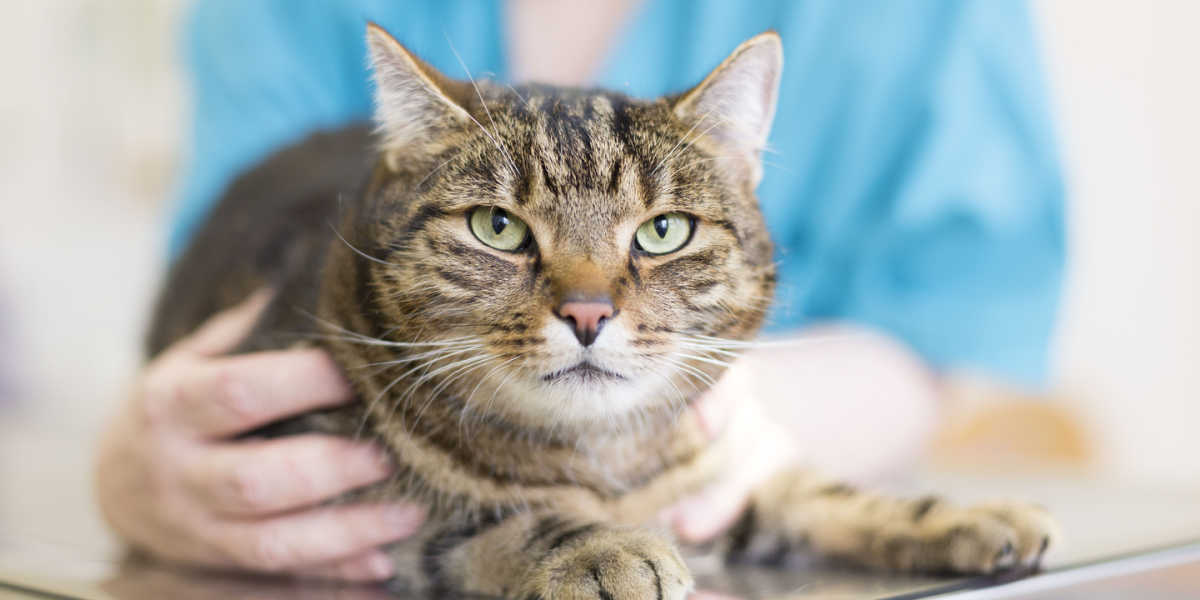
Depending on the location and degree of the pelvic fractures, cat might or might not require surgery.
Whether a fractured pelvis requires surgical treatment or not can depend on the location of fractures and the degree of displacement that has occurred. In general, the types of fractures where surgery might be needed include fractures of the sacrum, fractures of the ilium close to the hip joint, and fractures of the acetabulum/socket joint. An injury called a sacroiliac luxation, where the connection between the pelvis and the sacrum backbone (sacroiliac joint) has shifted or separated, might also require surgery.
In an article on pelvic fractures in pets published in Canadian Vet Journal, Dr. Greg Harasen explains that most animals with pelvic fractures can recover without surgery. He lists some of the following as more specific criteria for when surgery would be needed:
- Displaced acetabular fractures where the hindlimb connects to the pelvis
- If the pelvic canal has been narrowed by more than one-third by fracture fragments
- Neurologic trauma, including unmanageable nerve-related pain
- Multiple fractures occurring on just one side of the pelvis leading to an unstable hip joint
- Other bone injuries that would require too much weight-bearing on the fractured pelvis
Dr. Harasen also mentions that any injuries that occurred seven to 10 days prior are best handled with conservative management with rest and exercise restriction since bone healing has already started.
Pelvic fractures are surgically repaired with a combination of plates, wires, and screws, depending on the location and number of the injuries. While it can take eight to 12 weeks generally for full bone healing, recovery from pelvic fractures may take less time since the pelvic bones are smaller and thinner.
Recovery And Long-Term Effects
Many cats will be willing to stand and try to move within one week or less. Four weeks of exercise restriction is best to ensure proper fracture healing and prevent re-injury. If possible, this should involve cage rest: the cat being confined to a large crate that prevents too much movement but still allows for comfort and space for food, water, and a litter box.
During this time, gentle range of motion exercises and massage can be used to loosen the surrounding muscles and prevent stiffness that can delay return to normal function.
After four weeks, cats should be gradually introduced (over three to four weeks) to larger spaces to roam inside the home, preventing jumping as much as possible. This can mean moving from a crate to a small room, then allowing for access to one floor of the home before providing full access to the home.
X-rays will typically need to be rechecked after four to six weeks, and then again around eight to 12 weeks to ensure that the pelvic fractures have fully healed.
Injury of the overlying skin can be a common complication of pelvic injury in cats due to the impact trauma that occurs. This can lead to loss of healthy skin in severely bruised areas and the need to manage skin wounds and prevent infection. This might take a few weeks for full healing of the skin depending on the severity of injury.
Also Read: 5 Cat Cone Alternatives That Actually Work
Costs Of Treatment
The costs of treatment for a broken pelvis in cats can vary widely. This is not just due to the nature of the fractured pelvis itself, but also other injuries that have occurred. There may be more serious injuries that require more immediate attention with addressing the pelvic fractures coming later.
At the minimum, some of the following costs can be expected for pelvic fractures. Depending on where you live, you may find costs to be lower or higher than these estimates.
- Veterinary exam: $50 to $150
- X-rays: $200 to $500
- Pain medication: $50 to $150
In cases where an injured cat requires emergency stabilization, initial costs can easily exceed $1,000 for initial care, depending on severity of injuries or the condition of the cat.
Surgical repair of the pelvis will often involve a board-certified veterinary surgical specialist; any time implants like plates and screws are needed, costs are higher. Pelvic fracture repair for a cat might cost anywhere from $2,000 to $7,000 depending on the injuries and complexity of repair. Keep in mind that other injuries requiring surgical repair (like other broken bones) might increase costs.
Prognosis For Cats With Pelvic Fractures
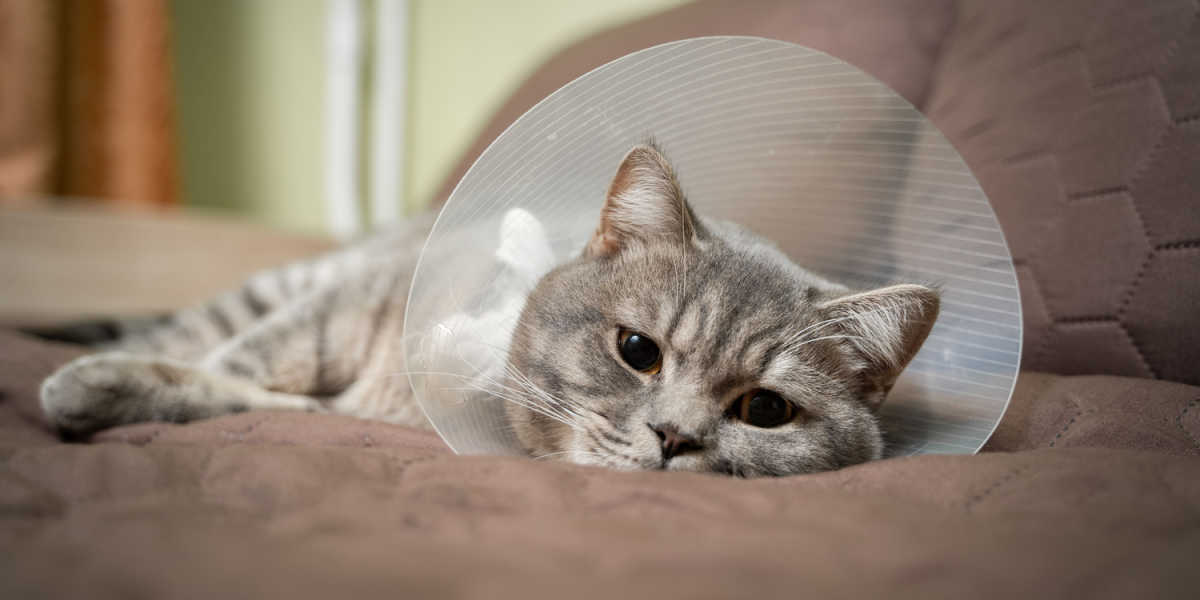
With proper veterinary treatment, most cats can recovery completely with little to no lasting effects.
Fortunately, the pelvis is surrounded by lots of muscle and soft tissue which help provide support even if bones of the pelvis are broken. Especially in cats, the likelihood of returning to full function can be very good, especially in the case of less severe or minimally displaced fractures.
Some long-term effects of pelvic fractures might require additional management later. If the ball and socket joint is severely affected and surgical repair was either not possible or if the injury occurred too long ago, pain might be relieved by surgical removal of the femoral head (the “ball” of the ball and socket joint). This is considered a salvage procedure but can be very successful for relieving chronic pain, especially for small animals like cats.
If the pelvic canal has become narrowed by fracture fragments, constipation and even blockage with fecal material can occur. Chronically, this can lead to a condition called megacolon where stool can no longer move through the colon normally. Megacolon can initially be managed with medications but surgery might be needed in more severe cases.
Final Thoughts
Pelvic fractures in cats can be seen commonly with trauma, especially from impact with a vehicle or from a very high fall. Cats suffering from these events might have multiple injuries, requiring emergency care.
Many cats with pelvic fractures might not require surgery except in cases where there is displacement of the bones or the hip joint is badly affected. Cats can have a good long-term prognosis as long as urinary and bowel movement function is preserved.
Also Read: Will Cats Fake A Limp For Sympathy?
-
Harasen G. (2007). "Pelvic fractures." Can Vet Journal, 48(4):427-8. PMID: 17494373; PMCID: PMC1831511.https://www.ncbi.nlm.nih.gov/pmc/articles/PMC1831511/
-
Langley-Hobbs, S. (2015). “State of the Art Lecture —Pelvic Fractures in Cats.” WSAVA Congress Proceedings, Accessed April 20, 2023. https://www.vin.com/apputil/content/defaultadv1.aspx?id=7259226&pid=14365
-
Pigott, A. (2020). “Pelvic Fractures in Cats.” Clinician’s Brief. Accessed online April 20, 2023. https://www.cliniciansbrief.com/article/pelvic-fractures-cats
-
Weh, M. (2009). “Assessment and Management of Pelvic Fractures in Dogs and Cats.” DVM360. Accessed April 20, 2023. https://www.dvm360.com/view/assessment-and-management-pelvic-fractures-dogs-and-cats-proceedings
-
Williams, K., D Stoewen, C Pinard. “Osteosarcoma in Cats”. VCA Animal Hospitals. Accessed April 20, 2023. https://vcahospitals.com/know-your-pet/osteosarcoma-in-cats
